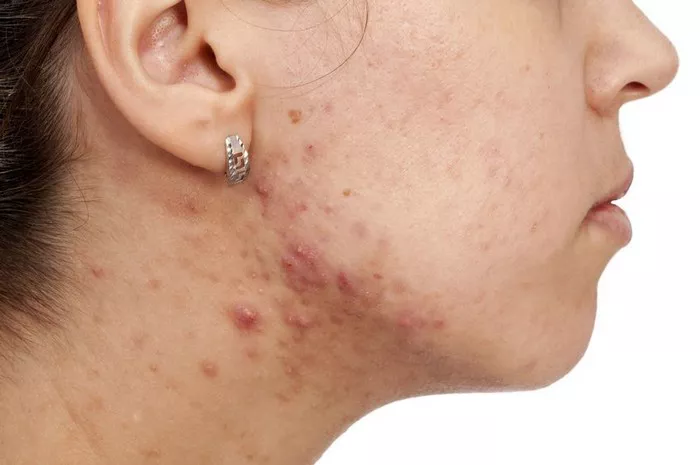Hidradenitis suppurativa (HS) is a chronic skin condition characterized by painful, recurrent nodules and abscesses that develop in areas rich in apocrine sweat glands, such as the armpits, groin, buttocks, and under the breasts. While HS primarily affects the skin, there is growing interest and concern regarding its potential impact on nerve structures within affected areas. This article explores the relationship between hidradenitis suppurativa and nerve damage, examining the mechanisms, clinical evidence, and implications for patient care.
Understanding Hidradenitis Suppurativa
To grasp the potential for nerve damage in HS, it’s essential to first understand the nature of the disease. HS begins with the blockage of hair follicles and subsequent inflammation, leading to the formation of painful nodules that can rupture and form abscesses. Over time, these recurrent flare-ups can result in chronic inflammation and scarring of the affected skin areas.
The Role of Nerve Structures
Nerves play a crucial role in transmitting pain signals and regulating various functions within the skin. In HS, the chronic inflammation and tissue damage can affect nearby nerve fibers, potentially leading to neuropathic pain and altered nerve function. The proximity of these nerves to the inflammatory lesions makes them susceptible to damage and dysfunction.
Clinical Evidence and Studies
Several studies have investigated the association between hidradenitis suppurativa and nerve damage. One notable finding is the presence of nerve fibers within and around HS lesions, which suggests a direct interaction between the inflammatory process and nerve structures. Research has also demonstrated higher levels of certain pain mediators and nerve growth factors in HS-affected tissue, indicating a neuroinflammatory component to the disease.
A study published in the Journal of the European Academy of Dermatology and Venereology reported that nearly half of HS patients experienced neuropathic-like pain, which was associated with the severity and duration of the disease . This suggests that ongoing inflammation and tissue damage in HS can lead to nerve-related symptoms beyond typical inflammatory pain.
Mechanisms of Nerve Damage
The exact mechanisms through which HS causes nerve damage are still being elucidated. However, several theories have been proposed:
1. Direct Compression and Inflammation: The presence of inflammatory lesions can physically compress nearby nerve fibers, leading to mechanical damage and altered nerve signaling.
2. Neuroinflammatory Response: The chronic inflammatory milieu in HS can trigger a cascade of immune responses that directly impact nerve function and contribute to neuropathic pain.
3. Ischemic Damage: Reduced blood flow to affected skin areas due to scarring and inflammation may lead to tissue hypoxia, which can also affect nerve viability.
Clinical Implications
The potential for nerve damage in HS has significant clinical implications. Neuropathic pain associated with HS can be challenging to manage and may require a multidisciplinary approach involving dermatologists, pain specialists, and neurologists. Proper pain assessment and management are crucial to improving the quality of life for patients with HS.
Furthermore, the presence of neuropathic symptoms in HS underscores the importance of early intervention and aggressive treatment to prevent disease progression and mitigate nerve-related complications. Therapeutic strategies aimed at reducing inflammation and controlling pain can help minimize the risk of long-term nerve damage.
Future Directions and Research
Continued research into the relationship between hidradenitis suppurativa and nerve damage is essential. Further studies are needed to elucidate the specific mechanisms underlying nerve injury in HS and to develop targeted therapies that address both the inflammatory and neuropathic components of the disease.
Moreover, identifying biomarkers associated with nerve damage in HS could facilitate early detection and personalized treatment approaches. Advances in understanding the neuroimmunological aspects of HS may pave the way for novel therapeutic interventions aimed at preserving nerve function and improving patient outcomes.
Conclusion
In conclusion, while hidradenitis suppurativa primarily affects the skin, its impact extends beyond cutaneous manifestations to potentially involve nerve structures within affected areas. Neuropathic pain and altered nerve function are increasingly recognized as significant components of the disease burden in HS patients. Clinicians and researchers must continue to explore the complex interplay between inflammation, nerve damage, and pain in HS to optimize patient care and develop targeted therapeutic strategies.
As our understanding of the pathophysiology of hidradenitis suppurativa evolves, so too will our ability to mitigate its broader impact on patient well-being, including the prevention and management of nerve-related complications.
Related Topics:

























